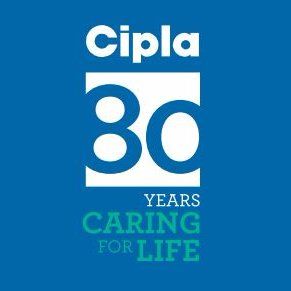预约演示
更新于:2025-05-07
Eye Infections, Fungal
真菌性眼感染
更新于:2025-05-07
基本信息
别名 Eye Infection, Fungal、Eye Infections, Fungal、Eye fungal infection + [52] |
简介 Infection by a variety of fungi, usually through four possible mechanisms: superficial infection producing conjunctivitis, keratitis, or lacrimal obstruction; extension of infection from neighboring structures - skin, paranasal sinuses, nasopharynx; direct introduction during surgery or accidental penetrating trauma; or via the blood or lymphatic routes in patients with underlying mycoses. |
关联
5
项与 真菌性眼感染 相关的药物靶点 |
作用机制 CYP51A1抑制剂 |
原研机构 |
最高研发阶段批准上市 |
首次获批国家/地区 欧盟 [+3] |
首次获批日期2002-03-19 |
靶点- |
作用机制- |
非在研适应症 |
最高研发阶段批准上市 |
首次获批国家/地区 日本 |
首次获批日期1965-11-01 |
靶点- |
作用机制- |
在研机构 |
原研机构 |
在研适应症 |
非在研适应症- |
最高研发阶段临床前 |
首次获批国家/地区- |
首次获批日期1800-01-20 |
43
项与 真菌性眼感染 相关的临床试验NCT06658002
Fungal Ulcer Treatment Augmented With Natamycin and Cyclosporine A
The goal of this clinical trial is to learn if adjunctive topical Cyclosporine A eye drops combined with standard of care topical Natamycin treatment improves vision outcomes in patients with fungal keratitis.
开始日期2025-06-01 |
申办/合作机构 |
NCT06463678
A Phase II, Multi-center, Randomized, Masked, Parallel-Control Study to Evaluate the Clinical Efficacy and Safety of IVIEW-1201 (1.0% PVP-Iodine) Gel Forming Ophthalmic Solution in the Treatment of Fungal Keratitis
A Phase II, Multi-center, Randomized, Masked, Parallel-Control Study to Evaluate the Clinical Efficacy and Safety of IVIEW-1201 (1.0% PVP-Iodine) Gel Forming Ophthalmic Solution in the Treatment of Fungal Keratitis.
开始日期2024-12-01 |
申办/合作机构 |
ChiCTR2400081995
Deep learning for anterior segment diseases
开始日期2024-03-19 |
申办/合作机构- |
100 项与 真菌性眼感染 相关的临床结果
登录后查看更多信息
100 项与 真菌性眼感染 相关的转化医学
登录后查看更多信息
0 项与 真菌性眼感染 相关的专利(医药)
登录后查看更多信息
3,169
项与 真菌性眼感染 相关的文献(医药)2025-07-01·Biomaterials Advances
Platelet membrane-camouflaged PLGA loaded natamycin improve the prognosis of fungal keratitis
Article
作者: Liu, Xing ; Jiang, Nan ; Zhao, Guiqiu ; Li, Cui ; Hou, Yaxin ; Wang, Qian ; Peng, Xudong ; Zhang, Yunfeng ; Lin, Jing
2025-07-01·The Ocular Surface
A masked study to differentiate in vivo confocal microscopic features of Pythium insidiosum and fungal filaments
Article
作者: Ali, Md Hasnat ; Mohanty, Amrita ; Sharma, Savitri ; Jain, K Shreeya ; Bagga, Bhupesh ; Duwal, Pabitra ; Gowtham, Lakshminarayanan ; Joseph, Joveeta ; Gokhale, Tanmay
2025-07-01·Diagnostic Microbiology and Infectious Disease
Investigating the susceptibility profiles and in vitro combinations of caspofungin, itraconazole, fluconazole, voriconazole, clotrimazole, and amphotericin B against clinical isolates causing fungal keratitis
Article
作者: Moghadam, Shaghayegh ; Zarrinfar, Hossein ; Najafzadeh, Mohammad Javad ; Heydarian, Rozhan ; Naseri, Ali ; Sadeghi, Javad
29
项与 真菌性眼感染 相关的新闻(医药)2025-04-13
·健识局
过去一周内,关税话题持续不断,尽管美国承诺超过90%的医药产品以及维生素类、氨基酸类等大宗原料药仍被纳入豁免清单,仅布洛芬、去甲伪麻黄碱等少数原料药未获豁免,但这场地缘政治紧张情绪已然蔓延到了医药界。一些跨国药企制造业已经逐渐回流美国本土,而此时,药品之外的中国CXO企业就成了最显眼的靶子。4月8日,美国国家新兴生物技术安全委员会发布了的报告将药明康德列为“深度嵌入美国生物医药供应链”公司,再次强化了中、美医药竞争的强度。回归国内,本土企业需要应对的挑战也有不少。第十批国采已经进入落地倒计时,4月7日,广西医保局发布了《关于做好第十批国家组织药品集中采购和使用落地工作的通知》表示,国采的62种中选药品,将在4月30日起执行,两日后河南也发布了相关文件。此外,包括上海、天津、广东、山东、江西、辽宁、广西、内蒙古、河北都已经明确了执行时间。其中,天津、河北已赶在前面率先执行。更多详细资讯,健识局整理如下:重磅政策一览1、北京发文32条措施支持创新药4月7日,北京市医疗保障局等九部门关于印发《北京市支持创新医药高质量发展若干措施 (2025年)》的通知。文件亮点在于:临床试验项目启动整体用时压缩至20周以内,多中心试验项目伦理审查互认率提高至90%以上;临床试验审批时限将由60个工作日压缩至30个;支持跨国企业以委托生产方式办理药品生产许可并在京上市。2、第十批国采进入落地倒计时4月7日,广西医保局发布了《关于做好第十批国家组织药品集中采购和使用落地工作的通知》表示,国采的62种中选药品,将在4月30日起执行,周期从2025年4月30日-2027年12月31日,为期2年,采购周期内采购协议每年一签。4月9日,河南省也部署第十批集采的罗氏方案,表示中选结果将在4月30日起执行,并且全国中药饮片联盟集中采购和豫东片区联盟基层用药集中采购中选产品采购周期原则上为1年,视情况可延长不超过1年。截至9日,上海、天津、广东、山东、江西、辽宁、广西、内蒙古、河北等地都已经明确了第十批集采的执行时间。其中,天津、河北已于4月1日率先执行。3、江西多个集采中选项目,一次性执行4月10日,江西省医保局发出《关于做好山东中药饮片等省际联盟药品集中带量采购中选结果执行工作的通知》,这是继山东之后,江西第二个开始落地执行中药饮片的省份。此次江西一口气执行了8个集采项目,涵盖319个品种,自4月30日起陆续落地到位。此次执行项目密度和工作量可谓空前。共包括山东中药饮片集采、全国中成药首批扩围接续、全国第三批中成药联盟、广东联盟阿莫西林等药品集采、广东联盟阿哌沙班片等药品集采、广东联盟金莲花胶囊等中成药集采、京津冀赣化学药品集采、三明“六病共管”药品集采8个项目。4、贵州新增13家失信企业4月11日,贵州医药集采平台发布了《2025年一季度价格招采信用评价失信评定结果公告》表示,截止2025年3月31日,医药价格和招采严重失信企业3家、中等失信企业12家,新增失信企业13家,共计涉及企业35家。集采中选后药物的落地已经是个老生常谈的问题了。根据国家医药行业信用评价及管理文件,情节特别严重的失信企业将面临丧失集中采购市场的风险,但失信企业也可以采取终止相关失信行为、主动剔除产品价格虚高空间、主动退回不合理价款等方式来进行信用修复。医药卫生事件1、中药企业濒临退市4月8日,龙津药业发布公告称,已跌破深圳证券交易所规定的5亿元市值红线,这意味着其股票将被终止上市。公司于2024年5月6日开市起,正式被实施退市风险警示,股票简称前冠以“*ST”字样,成为市场重点关注的“问题股”。值得注意的是,即将发布的2024年财报或成为其命运的 “判决书”,数据一旦触及规则红线,公司股票将正式被深圳证券交易所终止上市。2、美国再次点名药明康德4月8日,美国国家新兴生物技术安全委员会(NSCEB)发布了一份长达215页的报告,点名了中国生物制药龙头企业药明康德,将其形容为“生物领域的华为”。尽管美国《生物安全法案》未纳入2025财年国防授权法案,但NSCEB的报告再次强化了中美生物技术竞争的强度。3、莎普爱思低价出售药店4月10日,莎普爱思公告显示,莎普爱思同意将其持有的目标公司下辖12家医保门店的100%股权转让给万寿堂。根据协议,万寿堂将向莎普爱思支付人民币30万元,在完成目标公司股权变更工商登记手续后的3个工作日内,再支付剩余的20万。莎普爱思的股权转让价格依然是非常便宜的。除了是出于近年来这家老牌药企在业绩连年承压原因下的战略大调整,此次出售策略也十分符合当下药店的经济周期。4、康泰生物水痘疫苗价格“暴跌”4月10日,深圳市疾病预防控制中心公布了深圳市适龄儿童水痘疫苗采购中标成交结果公告。康泰生物子公司民海生物以25元/支的价格中标,中标总额为900万元。这是国内适龄儿童水痘疫苗中标历史上的最低价。此次招标共有5家竞标,分别为上海生物制品研究所、百克生物、科兴、长春祈健生和民海生物,他们的报价分别是41.8元/支、50元/支、37元/支、45元/支和25元/支。康泰生物子公司民海生物给出的报价在一众疫苗企业里最低。依以往的最低中标价来看,康泰生物子公司民海生物此次25元/支,降价幅度超一半以上,几乎腰斩。5、和铂医药高管调整4月10日,和铂医药宣布,正式任命陈侑晨为首席财务官,常驻中国上海和香港,直接汇报于和铂医药创始人、董事长兼首席执行官王劲松博士。据官方介绍,陈侑晨于2023年加入和铂医药,并在投资者关系、企业战略发展、业务拓展及财务领域逐步承担核心职责,加入和铂医药之前,陈侑晨曾于一家临床阶段放射性制药初创公司。在此之前,他还在毕马威、医渡科技、瑞信中国等单位任职。一周药械盘点1、中国首个基因疗法药物获批上市4月10日,国内基因治疗公司信念医药的波哌达可基注射液获国家药监局批准,用于治疗中重度血友病B成年患者。该产品也是国内首个获批上市的基因疗法、首个获批的血友病B基因治疗药物。2023年10月,信念医药曾宣布与武田达成合作,授予武田在中国内地、中国香港和中国澳门对波哌达可基注射液的商业化权益。目前该疗法的定价尚未公布。除中国市场外,波哌达可基注射液已经在美国和欧盟申报,并获得美国FDA授予孤儿药资格、儿科罕见病资格认定和欧洲药品管理局授予的先进治疗药物分类认证。2、济民可信首仿哮喘药物获批上市4月9日,济民可信集团宣布,公司自主研发的哮喘治疗用药吸入用丙酸倍氯米松混悬液获国家药品监督管理局批准上市,成为国内首家获批并视同通过一致性评价的仿制药,此后将由江西艾施特制药有限公司落地生产。吸入用丙酸倍氯米松混悬液原研药由意大利凯西制药开发,于2013年进入中国市场,已被《儿童雾化中心规范化管理指南》列为推荐用药。这个品种由于是激素专线、又是吸入混悬,也是高难度品种,成本较高,目前已申报的厂家还不多。市场一片蓝海下,公开资料显示,该药市场规模在2024年上半年就达到了20亿元,销售额增长率为9.20%。3、艾威药业眼科新药获FDA孤儿药资格4月8日,艾威药业宣布,美国FDA已授予其研发的IVIEW-1201(1.0%聚维酮碘眼用凝胶无菌溶液)孤儿药资格,用于治疗真菌性角膜炎。真菌性角膜炎是一种由丝状真菌或酵母菌感染角膜引起的严重眼部疾病,导致视力丧失甚至失明的几率较高,对眼部健康构成严重威胁。目前,FDA仅批准了Natamycin用于该适应症的治疗,但患者仍亟需更有效的治疗方案。艾威药业新闻稿表示,这一认定标志着公司在解决罕见眼科疾病未满足医疗需求方面迈出了重要一步。撰稿 | 苗苗编辑 | 江芸 贾亭运营 | 雾纪插图 | 视觉中国声明:健识局原创内容,未经许可请勿转载你敢信么?降脂新药打一针能管一年半FDA立新规矩,昭衍新药受伤担心关税影响!跨国药企花230亿美元在美国建厂
带量采购疫苗
2025-04-12
点击蓝字关注我们本周,热点不少。首先看审评审批方面,信念医药血友病基因疗法在中国获批上市以及乳腺癌1类新药在中国申报上市;其次看研发方面,多个药取得重要进展,其中,荣昌生物公布泰它西普最新Ⅲ期临床数据,98.1%患者显著改善;最后是交易及投融资方面,恒瑞医药辅助生殖领域口服GnRH拮抗剂中国大陆商业化权益授予德国默克。本期盘点包括审评审批、研发以及交易及投融资三大板块,统计时间为4.7-4.11,包含30条信息。 审评审批NMPA上市批准1、4月8日,NMPA官网显示,翰森制药的枸橼酸艾瑞芬净片获批上市,用于成年和初潮后女性外阴阴道念珠菌病(VVC)的治疗。艾瑞芬净是一款全新三萜类结构的糖原合成酶抑制剂,最初由SCYNEXIS开发。目前,艾瑞芬净已获FDA批准两项适应症,分别用于治疗外阴阴道念珠菌病(VVC)及降低复发性外阴阴道念珠菌病的发生率(RVVC)。2、4月8日,NMPA官网显示,恒瑞医药的夫那奇珠单抗注射液新适应症获批,用于常规治疗疗效欠佳的活动性强直性脊柱炎成人患者。夫那奇珠单抗是恒瑞医药自主研发的重组抗IL-17A人源化单克隆抗体,首个适应症已经于2024年8月在中国获批,治疗斑块状银屑病。3、4月8日,NMPA官网显示,恒瑞医药的艾玛昔替尼新适应症获批,用于对局部外用治疗或其他系统性治疗应答不充分或不耐受的成人和12岁及以上青少年中度至重度特应性皮炎患者。艾玛昔替尼是一款JAK1抑制剂,2025年3月,硫酸艾玛昔替尼片在中国获批上市,用于对一种或多种TNF抑制剂疗效不佳或不耐受的活动性强直性脊柱炎成人患者;随后获批用于治疗成人中重度活动性类风湿关节炎患者。4、4月10日,NMPA官网显示,信念医药全资子公司上海信致医药的波哌达可基注射液(商品名:信玖凝)获批上市,用于治疗中重度血友病 B(先天性凝血因子IX缺乏症)成年患者。波哌达可基注射液是重组腺相关病毒(rAAV)载体基因治疗产品,通过rAAV载体将FIX基因导入靶细胞(主要是肝细胞),从而表达FIX。申请5、4月7日,CDE官网显示,诺华的英克司兰钠注射液新适应症申报上市,预测用于治疗动脉粥样硬化性心血管疾病(ASCVD)患者或ASCVD高危人群。英克司兰钠是一款靶向PCSK9的小干扰核酸(siRNA)疗法,每年进行两次注射。该产品此前已于2023年8月在中国获批,用于治疗成人原发性高胆固醇血症(杂合子型家族性和非家族性)或混合性血脂异常患者。 6、4月8日,CDE官网显示,礼来1类新药Imlunestrant片申报上市,这是礼来在研的口服选择性雌激素受体降解剂(SERD)。该产品治疗雌激素受体阳性(ER+)、人表皮生长因子受体2阴性(HER2-)晚期乳腺癌患者的Ⅲ期临床研究此前已经取得积极结果。7、4月9日,CDE官网显示,武田的注射用阿帕达酶α申报上市。这是武田研发的酶替代疗法apadamtase alfa,于2025年3月被CDE正式纳入优先审评,适用于儿童和成人先天性血栓性血小板减少性紫癜(cTTP)患者的按需或预防酶替代治疗(ERT)。此前,2023年11月获FDA批准,为首款获FDA所批准用于治疗先天性血栓性血小板减少性紫癜(cTTP)成人和儿童患者的酶替代疗法。临床批准 8、4月7日,CDE官网显示,正大天晴1类治疗用生物制品注射用TQB2934获批临床,新增适应症为用于治疗成人系统性轻链(AL)型淀粉样变患者。注射用TQB2934是其开发的创新型抗BCMA/CD3双特异性抗体。此前,TQB2934已于2022年在中国获批临床,拟开发治疗多发性骨髓瘤。9、4月7日,CDE官网显示,凡恩世生物的Peluntamig获批Ⅱ期临床,将评估peluntamig与化疗和/或PD-L1抑制剂联合治疗在小细胞肺癌(SCLC)和其他神经内分泌癌(NEC),包括前列腺神经内分泌癌(NEPC)受试者中的安全性、耐受性、药代动力学和抗肿瘤活性。2024年,凡恩世与罗氏达成临床供药协议,以研究peluntamig与罗氏的PD-L1抑制剂阿替利珠单抗的联合用药。10、4月7日,CDE官网显示,华东医药控股子公司道尔生物申报的注射用DR30206获批临床,联合标准化疗用于治疗晚期或转移性消化道肿瘤患者,旨在评价DR30206联合标准化疗方案在消化道肿瘤中的安全性、耐受性和初步疗效。注射用DR30206是1类治疗用生物制品,为一种靶向PD-L1、VEGF和TGF-β的抗体融合蛋白。11、4月8日,CDE官网显示,中国生物制药旗下正大天晴1类新药TQB2922新适应症获批临床,新增适应症为联合已上市其他抗肿瘤药物治疗晚期恶性肿瘤。TQB2922是一种靶向EGFR/c-Met的人源化双特异性抗体,TQB2922拟联合多种抗肿瘤药物用于治疗包含肺癌在内的晚期恶性肿瘤,满足临床未被满足的治疗需求。12、4月8日,CDE官网显示,中国生物制药旗下正大天晴1类新药TQC2938新适应症获批临床,新增适应症为治疗季节性过敏性鼻炎。TQC2938是一种基于人ST2序列的人源化IgG2单克隆抗体。TQC2938可以特异性结合人ST2,明确地抑制IL-33/ST2信号通路,通过减少下游Th2细胞因子的产生,有望改善过敏性鼻炎症状。13、4月8日,CDE官网显示,冰洲石生物科技1类新药AC699片获批临床,拟用于治疗ESR1突变的雌激素受体阳性(ER+)和人表皮生长因子受体2阴性(HER2-)晚期或转移性乳腺癌。AC699是一种口服生物可利用的ERα嵌合降解剂。该产品目前正在美国处于Ⅰ期临床研究阶段,本次是其首次在中国获批IND。14、4月8日,CDE官网显示,正大天晴1类新药TQB3019胶囊获批临床,拟开发治疗血液肿瘤。TQB3019是该公司开发的口服BTK蛋白质靶向降解剂,其降解活性高、特异性好,无Ikaros和Aiolos脱靶降解,对TEC等激酶选择性高、口服成药性好。15、4月9日,CDE官网显示,先声药业旗下先祥医药1类新药注射用SIM0686获批临床,拟开发治疗FGFR2b阳性的局部晚期/转移性实体瘤。这是一款靶向FGFR2b的抗体偶联药物(ADC),先声药业拟开发该产品治疗胃癌和肺癌等晚期恶性肿瘤。本次是该产品首次在中国获批IND。16、4月11日,CDE官网显示,康方生物1类新药AK139注射液获批临床,拟开发治疗控制欠佳的慢性阻塞性肺疾病(COPD)、中重度控制欠佳的支气管哮喘。这是康方生物研发的靶向IL-4Rα/ST2双特异性抗体,也是该公司非肿瘤领域首个进入临床阶段的双特异性抗体新药,拟针对呼吸系统及皮肤疾病等多领域疾病展开探索。17、4月11日,CDE官网显示,士泽生物的异体通用“现货型”iPSC衍生多巴胺能神经前体细胞注射液获批注册临床试验申请,用于治疗帕金森病。此前于2025年1月,美国FDA已正式批准了士泽生物的通用型iPSC衍生多巴胺能神经前体细胞注射液的研究性新药申请(IND),用于治疗美国帕金森病的注册临床Ⅰ期试验。申请18、4月9日,CDE官网显示,Arcus Biosciences1类新药Casdatifan片申报临床。Casdatifan是一款在研HIF-2α小分子抑制剂,本次是该产品首次在中国申报IND。Casdatifan是一款在研HIF-2α小分子抑制剂。它通过选择性抑制HIF-2α,旨在阻断多种与肿瘤增殖、生存、耐药和血管生成相关的通路,从而导致癌细胞死亡。临床突破性疗法19、4月9日,CDE官网显示,鞍石生物的PLB1004胶囊拟纳入突破性治疗品种,用于治疗既往接受EGFR-TKI治疗失败后,具有EGFR突变、MET扩增和/或过表达的局部晚期或转移性NSCLC患者。PLB1004是其在研的新型小分子酪氨酸激酶不可逆抑制剂(EGFR-TKI),具有高选择性,可以透过血脑屏障。20、4月9日,CDE官网显示,康方生物的AK109注射液拟纳入突破性治疗品种,联合AK104用于治疗经含PD-(L)1抑制剂治疗后进展的晚期鳞状NSCLC。AK109是一款全人源VEGFR-2(抗血管内皮生长因子受体-2)单克隆抗体;AK104为一款PD-1/CTLA-4双特异性抗体,已经在中国获批治疗宫颈癌、胃癌等适应症。21、4月9日,CDE官网显示,翰森制药的注射用HS-20093拟纳入突破性治疗品种,用于治疗既往经过含铂化疗后进展或复发的驱动基因阴性的局部晚期或转移性非鳞状NSCLC。HS-20093是一种B7-H3靶向抗体偶联药物(ADC),由全人源抗B7-H3单抗与拓扑异构酶抑制剂(TOPOi)有效载荷共价连接而成。22、4月9日,CDE官网显示,三生制药的SSGJ-707注射液拟纳入突破性治疗品种,用于一线治疗PD-L1表达阳性的局部晚期或转移性NSCLC。SSGJ-707是一款VEGF/PD-1双抗,研究人员正在推进该产品在包括单药一线治疗PD-L1阳性的NSCLC、联合化疗一线治疗NSCLC、转移性结直肠癌(mCRC)、以及包括子宫内膜癌、卵巢癌等在内的晚期妇科肿瘤等Ⅱ期临床。FDA孤儿药资格23、4月8日,FDA官网显示,艾威药业的IVIEW-1201(1.0%聚维酮碘眼用凝胶无菌溶液)被授予孤儿药资格,用于治疗真菌性角膜炎(FK)。IVIEW-1201,在原理上、通过独特的杀菌机制和创新的给药途径,展现出可快速杀灭包括真菌、细菌和病毒在内的多种病原体而不易产生耐药性的优势,具有长效缓释和安全性高的特点。研发临床状态24、4月9日,ClinicalTrials官网显示,Argenx启动了补体C2单抗Empasiprubart(ARGX-117)的第二项Ⅲ期临床试验(ARGX-117-2302)。这是全球首个进入Ⅲ期阶段的补体C2药物,也是唯一一款临床在研补体C2药物。25、4月10日,药物临床试验登记与信息公示平台显示,百奥泰启动了BAT8006的首个Ⅲ期临床。该药物是继普方生物的PRO1184后,第二款进入Ⅲ期阶段的国产FRα ADC,也是百奥泰第二个启动Ⅲ期临床的ADC药物。临床数据26、4月8日,Cartesian Therapeutics公布了CAR-T细胞疗法Descartes-08治疗全身型重症肌无力(gMG)的Ⅱb期MG-001研究的12个月数据。Descartes-08是Cartesian Therapeutics开发的一款靶向B细胞成熟抗原(BCMA)的在研CAR-T细胞疗法。27、4月9日,荣昌生物公布了BLyS/APRIL双靶点融合蛋白泰它西普用于治疗全身型重症肌无力(gMG)Ⅲ期临床,数据显示,泰它西普治疗24周后,98.1%的患者重症肌无力日常活动评分(MG-ADL)改善≥3分,87%的患者定量重症肌无力评分(QMG)改善≥5分,具有显著的临床意义。 目前,泰它西普用于治疗全身型重症肌无力的上市申请已于2024年10月获CDE受理,并被纳入优先审评,预计于2025年二季度在中国获批上市。交易及投融资28、4月7日,德国默克宣布,获得恒瑞1类新药口服GnRH受体拮抗剂SHR7280(适应症涵盖医学辅助生殖及妇科领域)在中国大陆地区(不含中国香港、中国澳门和中国台湾地区)的独家商业化权益。 根据协议,默克将向恒瑞支付1500万欧元首付款;恒瑞有权收取许可产品的里程碑付款及在许可区域的年度净销售额两位数百分比的销售提成。29、4月7日,天境生物宣布,与渤健就菲泽妥单抗在中国的两项Ⅲ期注册性临床研究达成合作,共同推进菲泽妥单抗治疗IgA肾病(lgAN)和原发性膜性肾病(PMN)的开发与全球(包括中国)产品注册。天境生物拥有菲泽妥单抗在大中华地区(包括中国大陆、中国台湾、中国香港和中国澳门地区)所有适应症的独家开发、生产和商业化权益。30、4月11日,睿健医药宣布完成B+轮融资。本轮融资由丰川资本领投,荷塘创投跟投。根据新闻稿,该公司在短短数月间迅速完成两轮超亿元融资,合计融资金额超过2亿元人民币。本轮融资资金将用于加速推进睿健医药帕金森病治疗产品NouvNeu001/NouvNeu003,以及眼科治疗产品NouvSight001的中美临床推进,加强公司多款创新管线的研发推进和临床能力的搭建等。END2025金笔奖征文活动开启,来投稿吧!领取CPHI & PMEC China 2025展会门票智药研习社课程预告来源:CPHI制药在线声明:本文仅代表作者观点,并不代表制药在线立场。本网站内容仅出于传递更多信息之目的。如需转载,请务必注明文章来源和作者。投稿邮箱:Kelly.Xiao@imsinoexpo.com▼更多制药资讯,请关注CPHI制药在线▼点击阅读原文,进入智药研习社~
上市批准临床3期siRNA基因疗法优先审批
2025-04-09
·微信
氨基观察-创新药组原创出品作者 | 黄恺创新药企CEO用实际行动展示信心。4月9日,基石药业公告,CEO杨建新博士于4月2日至4月7日增持56万股。自2022年8月份以来,杨建新博士累计增持1045万股。CAR-T在自免领域有望更进一步。日前,Cartesian Therapeutics宣布,已与FDA进行沟通,计划在2025年第二季度启动CAR-T疗法Descartes-08治疗MG的首个III期研究(AURORA)。这意味着,Descartes-08有望成为自免领域首个CAR-T细胞疗法。在过去的一天里,国内外医药市场还有哪些热点值得关注?让氨基君带你一探究竟。/ 01 /市场速递1)诺泰生物与中东药企Julphar达成战略合作,向其供应司美格鲁肽原料药4月9日,诺泰生物公告,与中东知名药企Julphar PSC达成战略合作,将在阿联酋、卡塔尔、沙特阿拉伯、埃及、摩洛哥等中东和非洲地区22个国家就司美格鲁肽原料药供应与Julphar达成相关约定。/ 02 /资本信息1)基石药业杨建新累计增持1045万股4月9日,基石药业公告,CEO杨建新博士于4月2日至4月7日增持56万股。自2022年8月份以来,杨建新博士累计增持1045万股。/ 03 /医药动态1)三生制药SSGJ-707注射液拟获突破性疗法认定4月9日,据CDE官网,三生制药SSGJ-707注射液拟获突破性疗法认定,适应症为:一线治疗PD-L1表达阳性的局部晚期或转移性非小细胞肺癌。2)鞍石生物PLB1004胶囊拟获突破性疗法认定4月9日,据CDE官网,鞍石生物PLB1004胶囊拟获突破性疗法认定,适用于治疗既往接受EGFR-TKI治疗失败后,具有EGFR突变、MET扩增和/或过表达的局部晚期或转移性非小细胞肺癌的患者。3)艾威药业眼科新药获FDA授予孤儿药资格4月8日,艾威药业宣布,美国FDA已授予其研发的IVIEW-1201(1.0%聚维酮碘眼用凝胶无菌溶液)孤儿药资格,用于治疗真菌性角膜炎。4)98.1%患者显著改善!泰它西普治疗全身型重症肌无力III期临床试验数据发布4月9日,荣昌生物发布新闻稿表示,泰它西普用于治疗全身型重症肌无力(gMG)Ⅲ期研究结果,以“最新突破性研究”口头报告惊艳亮相。数据显示,泰它西普治疗24周后,98.1%的患者重症肌无力日常活动评分(MG-ADL)改善≥3分,87%的患者定量重症肌无力评分(QMG)改善≥5分,具有显著的临床意义。在已完成全身型重症肌无力Ⅲ期临床研究的药物中,泰它西普的MG-ADL应答率数据最高,有望改写该疾病领域的全球治疗格局。/ 04 /器械跟踪1)万泰生物TB-IGRA检测试剂盒被纳入联合国项目事务署采购清单4月9日,万泰生物公告,自主研发的结核感染T细胞检测试剂盒(体外释放酶联免疫法)(TB-IGRA检测试剂盒),被纳入联合国项目事务署(UNOPS)管理的StopTB Partnership采购清单。2)沛嘉医疗YonFlow血流导向密网支架获批上市4月9日,沛嘉医疗宣布,YonFlow血流导向密网支架获药监局批准上市。/ 05 /海外药闻1)欧盟委员会主席与制药行业领导人就美关税问题会谈4月9日,欧盟委员会主席冯德莱恩与制药行业领导人进行了交谈,就美国关税问题交换了意见。这有助于欧盟制定有效的应对措施。消息称,欧盟将与制药行业保持密切联系,以确保患者和工作人员的利益得到充分保护。当地时间4月8日,美国总统特朗普发表讲话称,美国将对药品征收关税。2)CAR-T疗法治疗重症肌无力有望挺进III期日前,Cartesian Therapeutics宣布,已与FDA进行沟通,计划在2025年第二季度启动CAR-T疗法Descartes-08治疗MG的首个III期研究(AURORA)。这意味着,Descartes-08有望成为自免领域首个CAR-T细胞疗法。PS:欢迎扫描下方二维码,添加氨基君微信号交流。
细胞疗法孤儿药免疫疗法突破性疗法临床3期
分析
对领域进行一次全面的分析。
登录
或

Eureka LS:
全新生物医药AI Agent 覆盖科研全链路,让突破性发现快人一步
立即开始免费试用!
智慧芽新药情报库是智慧芽专为生命科学人士构建的基于AI的创新药情报平台,助您全方位提升您的研发与决策效率。
立即开始数据试用!
智慧芽新药库数据也通过智慧芽数据服务平台,以API或者数据包形式对外开放,助您更加充分利用智慧芽新药情报信息。
生物序列数据库
生物药研发创新
免费使用
化学结构数据库
小分子化药研发创新
免费使用



